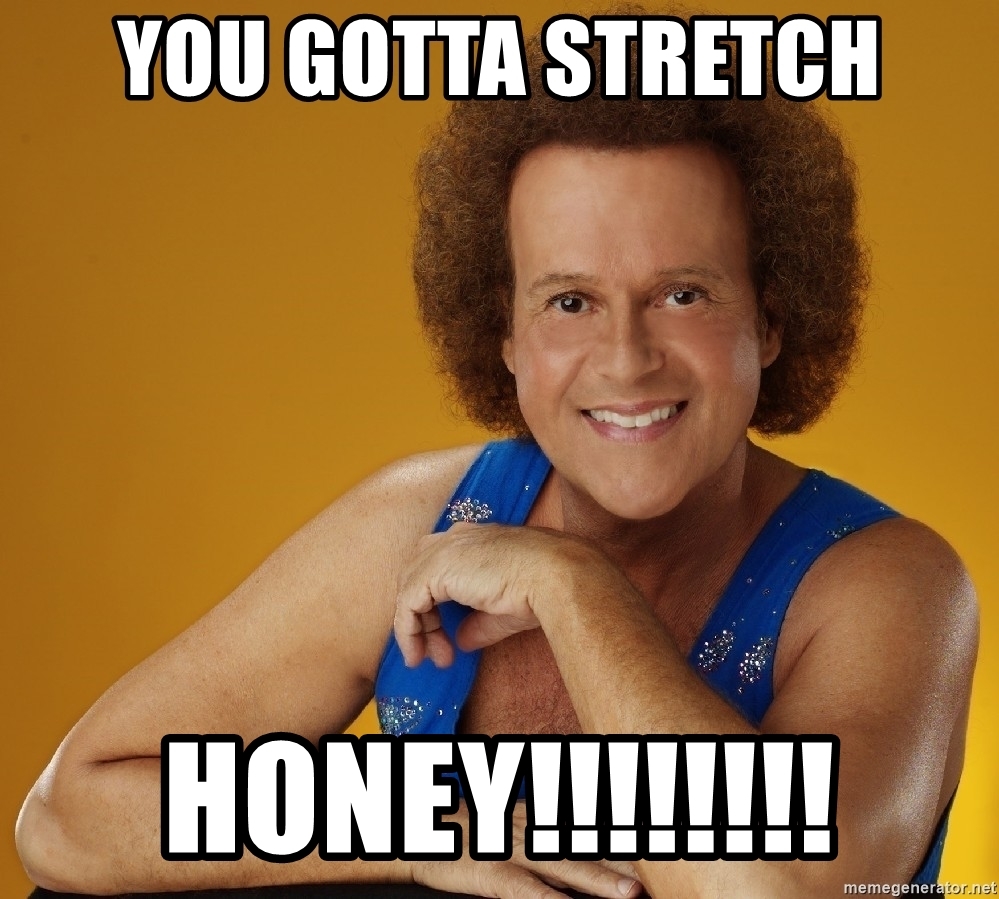When Should I Stretch? Better Yet, Should I Stretch At All?
By Joe King, PT
Physical Therapy Advantage
A question I get asked frequently is, “when is the best time to stretch – before or after I workout?” This is a great question and one of some debate over the past 10+ years. The general consensus among most health care providers and fitness/wellness professionals is BOTH! This may sound contrarian and even “political” on not taking one side or the other, but there are specific goals for stretching before an activity and after.
 It is advocated to perform dynamic stretches before you workout, exercise or perform an activity, and then do a set of gentle static stretches after you workout, etc. This applies for all sporting events, workouts, aerobic or strength workouts, yardwork and even house cleaning chores. Dynamic stretching is defined as joints and muscles being actively stretched through their full Range of Motion (ROM) and not held at the end range for any length of time. Static stretching is defined as putting tight muscles and joints in a position of stretch to elongate the tightened muscle and improve flexibility and joint ROM. Stretches are usually held for 10-60 seconds and will help decrease muscle soreness following an activity.
It is advocated to perform dynamic stretches before you workout, exercise or perform an activity, and then do a set of gentle static stretches after you workout, etc. This applies for all sporting events, workouts, aerobic or strength workouts, yardwork and even house cleaning chores. Dynamic stretching is defined as joints and muscles being actively stretched through their full Range of Motion (ROM) and not held at the end range for any length of time. Static stretching is defined as putting tight muscles and joints in a position of stretch to elongate the tightened muscle and improve flexibility and joint ROM. Stretches are usually held for 10-60 seconds and will help decrease muscle soreness following an activity.
The goal of the warm up and utilizing dynamic stretches is to prepare your muscles for whatever activity you are going to do and decrease the chance of injury. No specific set of dynamic stretches have been established, but typically, you should perform movements that mimic the activity and/or sport you will be doing. For example, if you are golfing, then do some easy trunk twists/rotations, weight shifts on each leg, hamstring stretches (soldier marches) and easy arm circles. If yard work is on the docket, then perform trunk twists/rotations, hamstring stretches, easy mini squats, and even some trunk flexion moves. Your dynamic stretches will usually take about 7-15 minutes, so allow this extra time before your workout or activity.
While you are working out or during any activity, it is absolutely okay to stop and stretch a certain muscle group you are feeling is “tight”. Whether you use a static or dynamic stretch at that time is up to you as which one “gives you the best stretch”.
After you complete your activity, now is the time to do gentle, static stretches to really focus on lengthening your tight muscles. You are thoroughly warmed up and blood flow is really high which will allow a more aggressive stretch with less discomfort and be able to physiologically lengthen the muscles better. Focus on stretching all the muscle groups you used during your activity and don’t forget the hip rotators (internal and external) which are often overlooked. Please remember to breathe, stay relaxed, don’t cause your muscle to tremor and most importantly, NO PAIN. As stated above, you will hold these static stretches for at least 10 seconds up to 60 seconds (the longer the better, especially as we age!) These static stretches are so beneficial to decrease muscle soreness, improve flexibility, increase joint ROM, and help us move more freely and sleep better.
So, to answer my first question: When should I stretch? – Dynamic stretches before and static stretches after. More importantly, Should I stretch at all? – I hope you are able to deduce for yourself that I am a HUGE advocate of stretching and encourage all my clients, friends, neighbors, & family to stretch daily! It is one of the best ways to reduce stress, sleep better, stay flexible & mobile and reduce your risk for injuries (being strong may also help this last point, but that is another topic for a different article).
Any questions about stretching or anything else related staying strong or beginning an exercise program, please do not hesitate to give me a call at 630-892-8003. Thank you and have a fantastic Summer!
